Have you ever dreamed of achieving flawless precision in cutting materials, from metal to delicate fabrics, with utmost efficiency and accuracy? Your dream can become a reality with the marvel of technology known as the CNC Water Jet Cutter. In this comprehensive guide, I will take you on a journey through the world of CNC Water Jet Cutting, uncovering its intricacies, applications, and the incredible possibilities it offers.
CNC Water Jet Cutting is a cutting-edge technology that utilizes the power of high-pressure water streams mixed with abrasive particles to cut through a wide range of materials. This remarkable process has revolutionized industries such as aerospace, automotive, and even home DIY enthusiasts. Let's dive deeper into how this incredible technology works.
At the heart of a CNC Water Jet Cutter lies a sophisticated system that combines water and abrasives to create a cutting stream with unparalleled precision. The water jet cutter typically consists of several key components, including a high-pressure pump, an abrasive delivery system, and a cutting head.
High-Pressure Pump: This pump pressurizes water to incredibly high levels, often exceeding 60,000 pounds per square inch (psi). The immense pressure forces water through a tiny orifice, creating an ultra-high-speed stream.
Abrasive Delivery: Abrasive particles, such as garnet or aluminum oxide, are mixed with the high-speed water stream. These abrasives enhance the cutting power, allowing the cutter to slice through materials like metal, glass, or stone.
Cutting Head: The cutting head, equipped with a focusing nozzle, directs the abrasive-laden water jet onto the material to be cut. Computer-controlled precision ensures that the cut is exact, regardless of the intricacy of the design.
By precisely controlling the movement of the cutting head and regulating the pressure and abrasive flow, CNC Water Jet Cutters can create intricate patterns, shapes, and cuts with minimal material wastage.
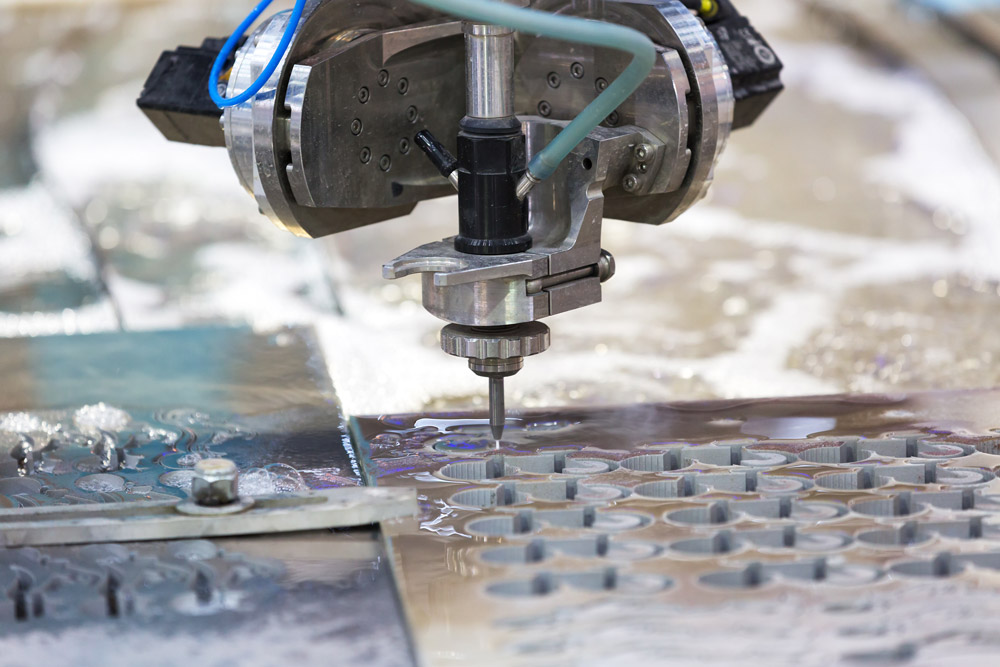
Now that we've explored the mechanics of CNC Water Jet Cutting, let's delve into a crucial consideration for potential buyers - the price. The cost of a water jet cutter can vary significantly based on several factors.
Machine Size and Capacity: Larger and more powerful CNC water jet cutters generally come with a higher price tag. Consider your specific cutting needs to determine the appropriate machine size for your requirements.
Accuracy and Precision: CNC water jet cutters with enhanced precision and advanced control systems tend to be more expensive. However, they are essential for applications demanding meticulous detailing.
Abrasive Type and Consumption: Different abrasives have varying costs, and the rate of abrasive consumption can impact your overall operating expenses. Understanding your material requirements is key to cost-effective operation.
Maintenance and Support: Factor in the long-term costs associated with machine maintenance and technical support. Investing in a reputable brand with reliable service can save you money in the long run.
Before making a purchase, it's essential to conduct a thorough cost-benefit analysis, taking into account your specific needs and budget constraints.
CNC Water Jet Cutters come in various forms to cater to diverse applications. Let's explore three popular types:
Desktop Water Jet Cutter: These compact machines are ideal for small workshops or businesses. They offer versatility and precision while taking up minimal space. Consider a desktop water jet cutter if you have limited room but high cutting demands.
Home Water Jet Cutter: If you're a DIY enthusiast or hobbyist looking to unlock your creative potential, a home water jet cutter can be a game-changer. It allows you to craft intricate designs from the comfort of your home.
Handheld Water Jet Cutter: On-the-go cutting solutions are vital in fields like construction and renovation. Handheld water jet cutters provide portability and ease of use, making them invaluable for professionals who require precision cutting in diverse locations.
| Feature | Desktop Cutter | Home Cutter | Handheld Cutter |
|---|---|---|---|
| Portability | Limited | High | Excellent |
| Precision | High | Moderate | Moderate to High |
| Space Requirement | Minimal | Minimal | Compact |
| Ideal for DIY | No | Yes | No |
| Industrial Applications | Yes | Limited | Yes |
| Cost | Moderate | Affordable | Varies |
This table provides a quick comparison of the three types of water jet cutters, helping you make an informed choice based on your specific needs.
The pressure in a water jet cutter is a critical parameter that directly impacts the cutting process. Achieving the right pressure level is essential for obtaining clean, accurate cuts.
Pressure Control: Precision in pressure control is crucial. Different materials require different pressure settings. Consult the machine's specifications and material guidelines for optimal results.
Pressure Impact: Understanding how pressure affects the cut is essential. Higher pressure can result in faster cutting speeds, but it may also affect the material's edge quality. Finding the right balance is key.
CNC Water Jet Cutters can slice through an impressive array of materials, but it's important to know the limitations and compatibilities.
Common Materials: Metals, plastics, ceramics, and composites are among the materials that CNC water jet cutters can handle. The technology's versatility makes it a go-to choice for various industries.
Thickness Considerations: While water jet cutters can handle thick materials, there are practical limitations. Thicker materials may require multiple passes or specialized equipment.
Specialty Materials: Water jet cutting can even be used for sensitive materials like glass, where traditional methods might cause damage. It's crucial to explore the possibilities for your specific needs.
To ensure the precision and longevity of your CNC water jet cutter, it's essential to select the right abrasive material and pressure settings for your intended application. Additionally, consider the impact of material thickness on the cutting process, as this can influence your choice of machine and cutting parameters.
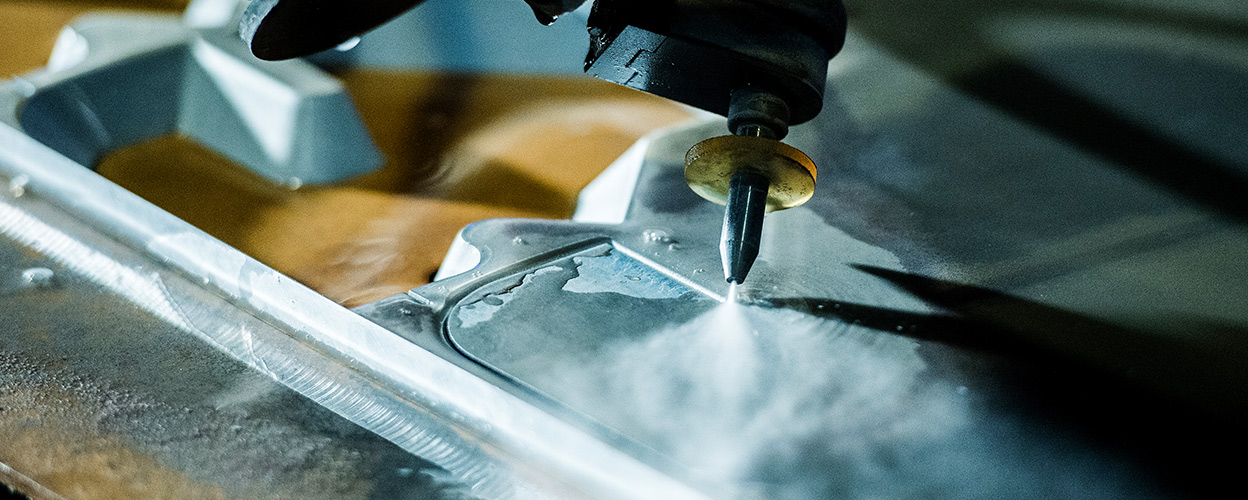
For industries where precision metal cutting is paramount, CNC Water Jet Metal Cutters offer unmatched capabilities.
Advantages: Water jet cutting for metal provides several advantages, including minimal heat-affected zones, reduced material waste, and the ability to cut intricate designs with ease.
Industries Benefiting: Aerospace, automotive, and architectural industries, among others, rely on water jet metal cutters for producing high-quality components and decorative elements.
Intricate Metalwork: Whether it's intricate designs in architectural metalwork or precise components for aerospace applications, water jet metal cutters excel in delivering top-notch results.
CNC Water Jet Cutting is a game-changing technology that empowers industries and individuals alike to achieve precision and efficiency in material cutting. Whether you're considering a desktop cutter for your small business or exploring the possibilities of water jet metal cutting in aerospace, understanding the technology and its various applications is the first step towards harnessing its full potential.
Now, armed with the knowledge of how CNC Water Jet Cutters work, factors affecting their price, the diverse types available, and the technical aspects involved, you're ready to take the next step. Evaluate your specific needs, budget, and desired precision levels, and embark on a journey to transform your cutting tasks into works of art, precision, and efficiency. Your CNC Water Jet Cutter awaits, poised to bring your cutting visions to life.
While water alone can be used for cutting, adding abrasives to the water jet enhances its cutting capabilities significantly. Abrasives, typically in the form of fine particles, serve several critical functions in the cutting process:
Material Removal: Abrasives help to erode the material being cut, allowing the water jet to penetrate more effectively. This is particularly important when cutting hard materials like metal or granite.
Strain Relief: Abrasives reduce the stress on the water jet by creating a small gap between the jet and the material. This gap minimizes the risk of jet deflection and ensures a straight, precise cut.
Cutting Speed: By accelerating the erosion process, abrasives enable faster cutting speeds. This is advantageous for industries where time is a critical factor.
Surface Finish: Depending on the type of abrasive used, you can achieve different surface finishes. For example, garnet abrasives are often used for a smoother finish, while aluminum oxide abrasives can produce coarser finishes.
Versatility: Abrasives allow water jet cutters to handle a wider range of materials, from soft plastics to ultra-hard ceramics. This versatility makes water jet cutting suitable for diverse applications.
The design of the cutting nozzle plays a crucial role in determining the precision and quality of cuts produced by CNC Water Jet Cutters. Nozzles come in various shapes and sizes, each suited to specific applications:
Focused Nozzle: This nozzle type concentrates the water jet into a tight, focused stream. It's ideal for intricate cuts and achieving high levels of detail.
Diffuser Nozzle: The diffuser nozzle spreads the water jet into a wider, less concentrated stream. It's useful for applications where a coarser cut is acceptable, or where cutting speed is a priority.
Abrasive Nozzle: For abrasive water jet cutting, special nozzles are designed to mix and deliver the abrasive particles along with the water stream. These nozzles ensure an even distribution of abrasives for consistent cutting.
Multi-Orifice Nozzle: In some cases, multi-orifice nozzles are used to cut multiple pieces simultaneously, increasing efficiency and reducing production time.
Selecting the right nozzle for your application is crucial for achieving the desired results. Factors such as material type, thickness, and required precision should all be considered when making this choice.
The versatility of CNC Water Jet Cutting extends its applications across a wide range of industries. Let's explore how this technology is making a difference in some key sectors:
In aerospace manufacturing, precision and quality are paramount. CNC Water Jet Cutting is used to create intricate components for aircraft, including engine parts, brackets, and interior components. The ability to cut a variety of materials, including aluminum, titanium, and composites, makes water jet cutting indispensable in this field.
Automotive manufacturers rely on CNC Water Jet Cutting for shaping and cutting various materials used in vehicle production. This includes cutting metal parts, interior upholstery, and specialized components. The precision and minimal material wastage make water jet cutting a cost-effective choice for the automotive sector.
In architecture and interior design, water jet cutting offers limitless possibilities. From decorative metalwork and intricate stone designs to custom tile patterns, CNC Water Jet Cutting allows architects and designers to bring their creative visions to life with precision and ease.
The medical and pharmaceutical sectors use CNC Water Jet Cutting for fabricating precise medical devices and components. Its ability to cut materials such as plastics and stainless steel with minimal heat-affected zones ensures the integrity of medical equipment.
Even the food industry benefits from CNC Water Jet Cutting. It's used to slice delicate ingredients, such as cakes and pastries, with precision, maintaining the integrity of the food product. The hygienic nature of water jet cutting makes it suitable for food handling applications.
Safety should always be a top priority when working with CNC Water Jet Cutters. Here are essential safety considerations to keep in mind:
Personal Protective Equipment (PPE): Operators should wear appropriate PPE, including safety glasses, hearing protection, gloves, and aprons. The high-pressure water jet can cause injury if proper precautions are not taken.
Machine Enclosure: Ensure that the CNC water jet cutter is enclosed with safety guards to prevent accidental contact with the water jet during operation.
Emergency Stop: Familiarize yourself with the machine's emergency stop procedures and location. In case of any unexpected events, knowing how to quickly stop the machine can prevent accidents.
Material Clamping: Secure materials firmly to the cutting table to prevent movement during cutting. Unsecured materials can lead to imprecise cuts and potential hazards.
Abrasive Handling: When handling abrasives, wear appropriate protective gear, and follow guidelines for safe storage and disposal. Abrasive particles can be hazardous to health if mishandled.
Operator Training: Ensure that operators receive proper training in operating the CNC water jet cutter. They should be knowledgeable about the machine's controls, maintenance procedures, and safety protocols.
To maximize the lifespan and efficiency of your CNC Water Jet Cutter, regular maintenance is essential. Here are some maintenance tips to keep your machine running smoothly:
Water Quality: Ensure that the water used in the machine is clean and free from impurities. Regularly check and clean the water filtration system to prevent clogs.
Nozzle Inspection: Periodically inspect the cutting nozzle for signs of wear and tear. Worn nozzles can result in imprecise cuts and increased abrasive consumption.
Abrasive Delivery System: Check the abrasive delivery system to ensure that it is functioning correctly. Any issues with abrasive flow can affect cutting quality.
High-Pressure Pump Maintenance: Follow the manufacturer's recommendations for pump maintenance, including changing seals and intensifier components as needed.
Lubrication: Lubricate moving parts, such as rails and bearings, as specified in the machine's maintenance manual. Proper lubrication reduces friction and extends the life of these components.
Software Updates: Keep the CNC control software up to date. Software updates may include bug fixes and performance enhancements.
Regular Cleaning: Clean the cutting table and surrounding area regularly to prevent the buildup of abrasive dust and debris, which can affect machine performance.
Training: Ensure that your maintenance personnel are trained in the specific maintenance procedures for your CNC water jet cutter. Proper maintenance can prevent costly breakdowns and downtime.
Despite regular maintenance, CNC Water Jet Cutters may encounter occasional issues. Here are some common problems and their possible solutions:
Inconsistent Cuts: If you notice variations in cut quality, check the nozzle for wear, the abrasive flow rate, and the material's condition.
Excessive Abrasive Consumption: This may indicate a problem with the abrasive delivery system. Inspect hoses, fittings, and valves for leaks or blockages.
Water Pressure Fluctuations: Fluctuations in water pressure can affect cut quality. Ensure that the high-pressure pump is functioning correctly and that all connections are secure.
Machine Errors: If the CNC control system displays error messages, consult the machine's manual or contact technical support for guidance.
Excessive Noise: Unusual noises can indicate issues with the cutting head, high-pressure pump, or other components. Investigate the source of the noise and address it promptly.
The future of CNC Water Jet Cutting is closely tied to automation and robotics. Manufacturers are increasingly integrating these technologies to enhance productivity and reduce labor costs. Automated loading and unloading systems, as well as robotic arms, can significantly reduce the need for manual intervention in the cutting process. This not only increases efficiency but also allows for 24/7 operation.
AI is playing a transformative role in CNC Water Jet Cutting. Machine learning algorithms can analyze cutting data in real-time, optimizing cutting parameters for improved precision and speed. AI can also detect and predict maintenance needs, reducing downtime and preventing costly breakdowns.
Nanotechnology is being applied to abrasive materials used in water jet cutting. Nano-sized abrasive particles offer enhanced cutting capabilities, allowing for finer finishes and more intricate cuts. These advanced abrasives also contribute to longer nozzle life and reduced abrasive consumption.
As environmental concerns grow, CNC Water Jet Cutting is moving towards greater eco-friendliness. Water recycling systems are becoming more sophisticated, reducing water consumption and waste. Additionally, there is a push to develop more environmentally friendly abrasives to minimize the impact of water jet cutting on the environment.
The convergence of CNC Water Jet Cutting and 3D printing is an exciting trend. This integration allows for the creation of complex, multi-material objects. Water jet cutting can be used to precisely trim and finish 3D-printed parts, enhancing their quality and functionality.
The software that controls CNC Water Jet Cutters is continuously evolving. Future developments may include more intuitive user interfaces, real-time simulation of cuts, and even cloud-based control systems that allow operators to monitor and control machines remotely.
The ability to provide customization and personalization is becoming increasingly important in many industries. CNC Water Jet Cutters are well-suited to this trend, allowing for the creation of unique, one-of-a-kind products across various sectors, from art and design to manufacturing.
Advancements in miniaturization are making portable water jet cutters more accessible. These smaller, more compact machines are finding applications in fields where on-site precision cutting is required, such as construction and repair.
In the medical field, CNC Water Jet Cutting is being used to manufacture custom implants and medical devices with exceptional precision. This trend is expected to grow as technology continues to advance.
The future of CNC Water Jet Cutting is filled with exciting possibilities. As automation, AI, nanotechnology, and eco-friendly initiatives continue to shape this technology, we can expect even greater precision, efficiency, and versatility. From aerospace and automotive industries to art and design, CNC Water Jet Cutters will continue to play a vital role in shaping the future of manufacturing and creative endeavors.
We hope this comprehensive guide has provided valuable insights into CNC Water Jet Cutting, from its basic principles to its advanced applications and future trends. Armed with this knowledge, you are well-equipped to explore the limitless possibilities this technology offers.
Thank you for joining us on this journey through the world of CNC Water Jet Cutting, where precision meets innovation.
To go beyond tradition, we strive for excellence.Richconn is the CNC machining services company you can trust to provide exceptional CNC water jet cutting machine services. No matter how complex your project needs to be, we have the advanced technology and superior workmanship to ensure that every cut is made to the perfect standard of precision and quality. Whether you're in the aerospace, automotive manufacturing, architectural design, or medical industries, we'll provide a solid foundation for your success. Choose Richconn, embrace unlimited creativity and precision machining, and let's shape the future together.
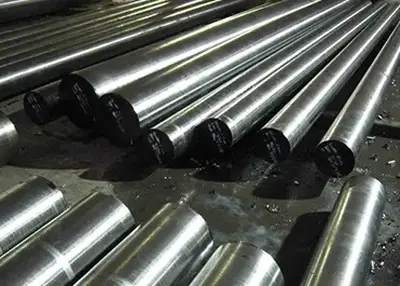 4140 Steel: A Versatile Alloy with Excellent PropertiesDecember 7, 2023Steel is one of the most widely used materials in the world, thanks to its strength, durability, and versatility. However, not all steel grades are the same. Depending on the chemical composition and the heat treatment, different steel grades can have different properties and applications.view
4140 Steel: A Versatile Alloy with Excellent PropertiesDecember 7, 2023Steel is one of the most widely used materials in the world, thanks to its strength, durability, and versatility. However, not all steel grades are the same. Depending on the chemical composition and the heat treatment, different steel grades can have different properties and applications.view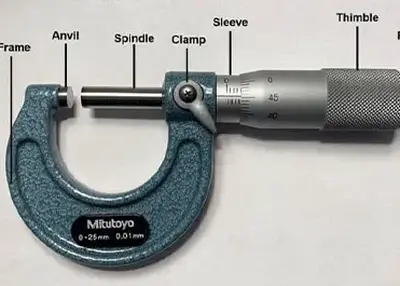 Machinist Tools: What They Are, How to Use ThemDecember 1, 2023Machinist tools are a variety of products that are used to shape, cut, grind, shear, and form metal into a desired part. They are essential for metalworking and machining, which are the processes of creating metal products or components by removing metal chips in the workpiece.view
Machinist Tools: What They Are, How to Use ThemDecember 1, 2023Machinist tools are a variety of products that are used to shape, cut, grind, shear, and form metal into a desired part. They are essential for metalworking and machining, which are the processes of creating metal products or components by removing metal chips in the workpiece.view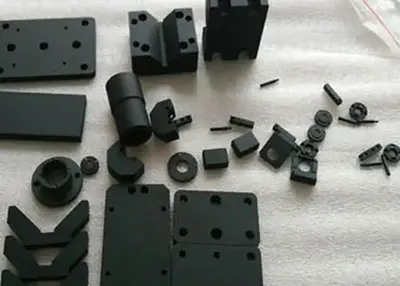 What Are the Types of Metal Surface Finish?September 16, 2022Machining surface finishing is an important processing procedure in machining. Machining surface finish can play an important role in protecting and beautifying the workpiece. In machining, there are ...view
What Are the Types of Metal Surface Finish?September 16, 2022Machining surface finishing is an important processing procedure in machining. Machining surface finish can play an important role in protecting and beautifying the workpiece. In machining, there are ...view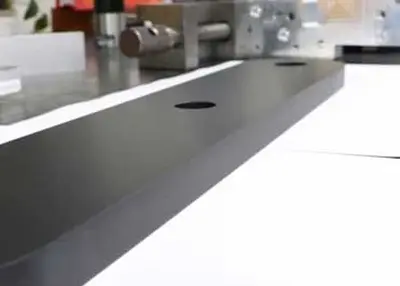 What Is Titanium Used for? (5 Common Uses)August 29, 2023Titanium has carved an impressive niche for itself within a myriad of industries and applications, all thanks to its extraordinary and unparalleled properties. The element of Titanium is symbolized by...view
What Is Titanium Used for? (5 Common Uses)August 29, 2023Titanium has carved an impressive niche for itself within a myriad of industries and applications, all thanks to its extraordinary and unparalleled properties. The element of Titanium is symbolized by...view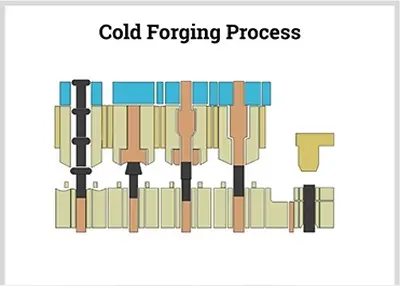 When to Use the Cold Heading ProcessOctober 19, 2023As a professional machining manufacturer, we use the most appropriate machining process to precision machine products and reduce customers' purchasing costs and production time. Precision casting, forging, and profile machining are all very common. In addition cold heading, oil extrusion and other processes are also often used.view
When to Use the Cold Heading ProcessOctober 19, 2023As a professional machining manufacturer, we use the most appropriate machining process to precision machine products and reduce customers' purchasing costs and production time. Precision casting, forging, and profile machining are all very common. In addition cold heading, oil extrusion and other processes are also often used.view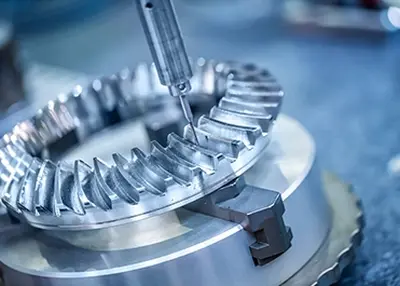 How Many Types of Gears Are There? What Common Materials Are Suitable for Making Gears?October 26, 2023Gears are mechanical parts with teeth that can mesh with each other, and they are widely used in mechanical transmission and the whole mechanical field. There are many types of gears, mainly reclusive gear axis classification, generally divided into parallel shaft, intersecting shaft and staggered shaft three types.view
How Many Types of Gears Are There? What Common Materials Are Suitable for Making Gears?October 26, 2023Gears are mechanical parts with teeth that can mesh with each other, and they are widely used in mechanical transmission and the whole mechanical field. There are many types of gears, mainly reclusive gear axis classification, generally divided into parallel shaft, intersecting shaft and staggered shaft three types.view